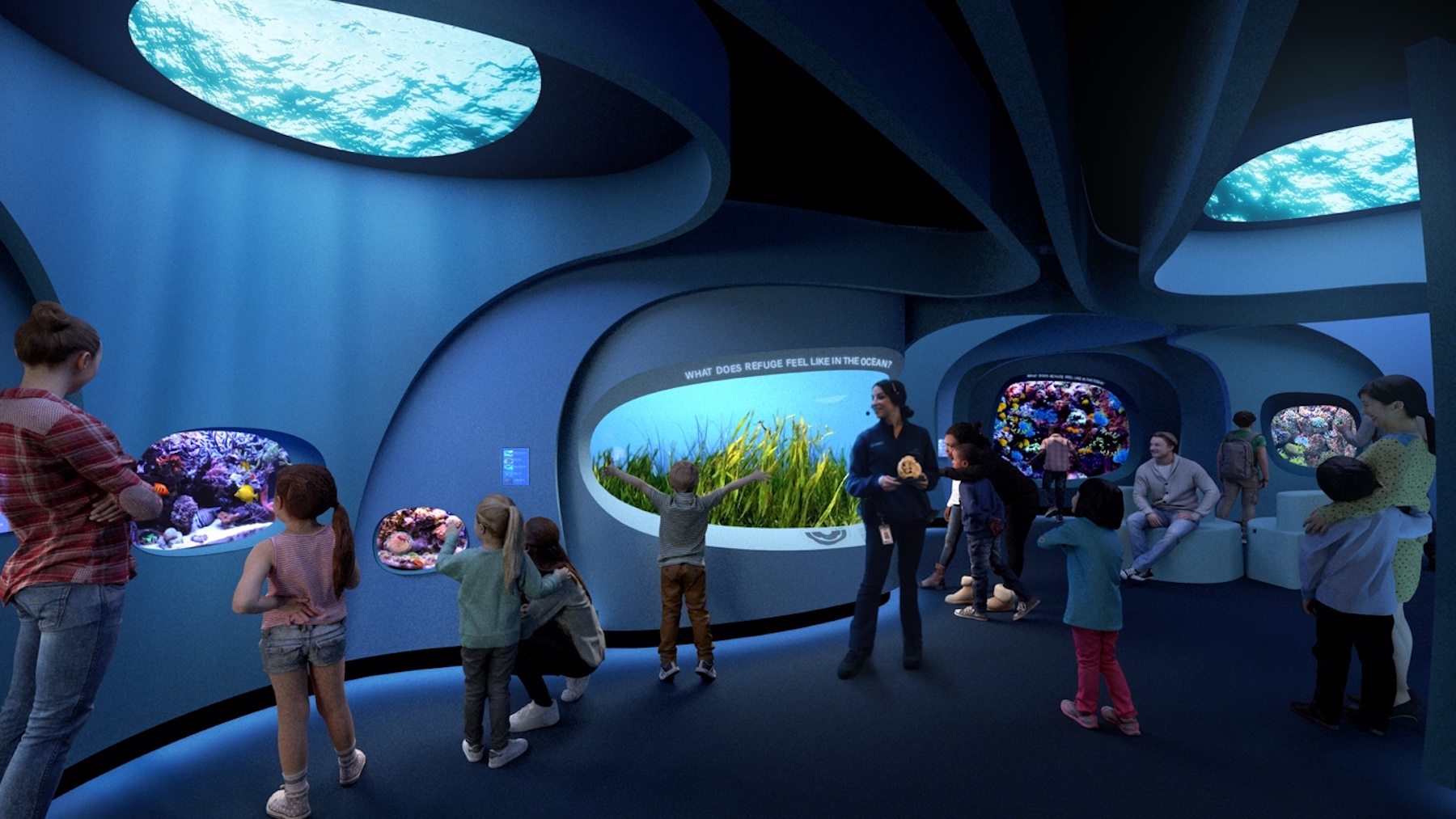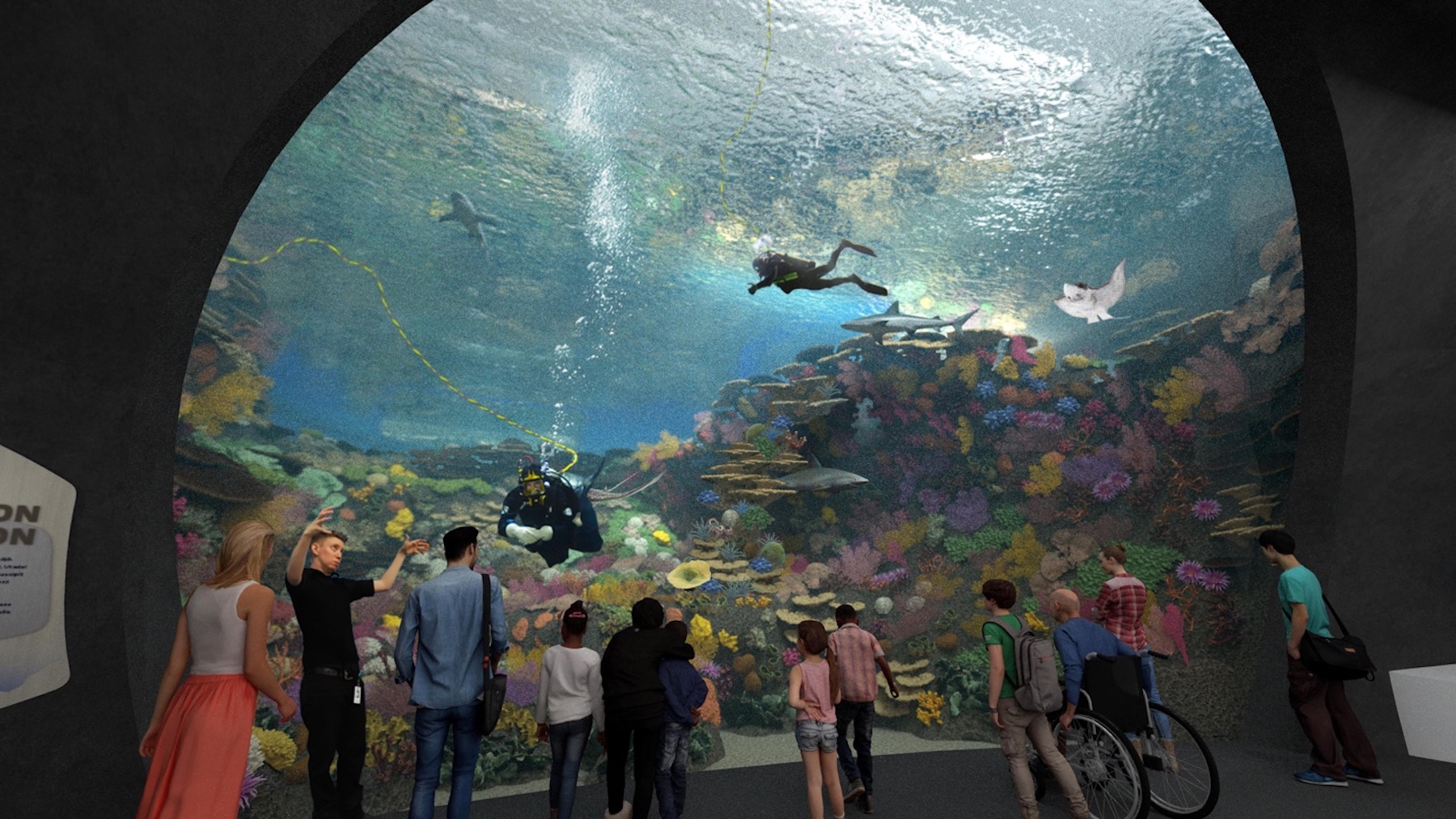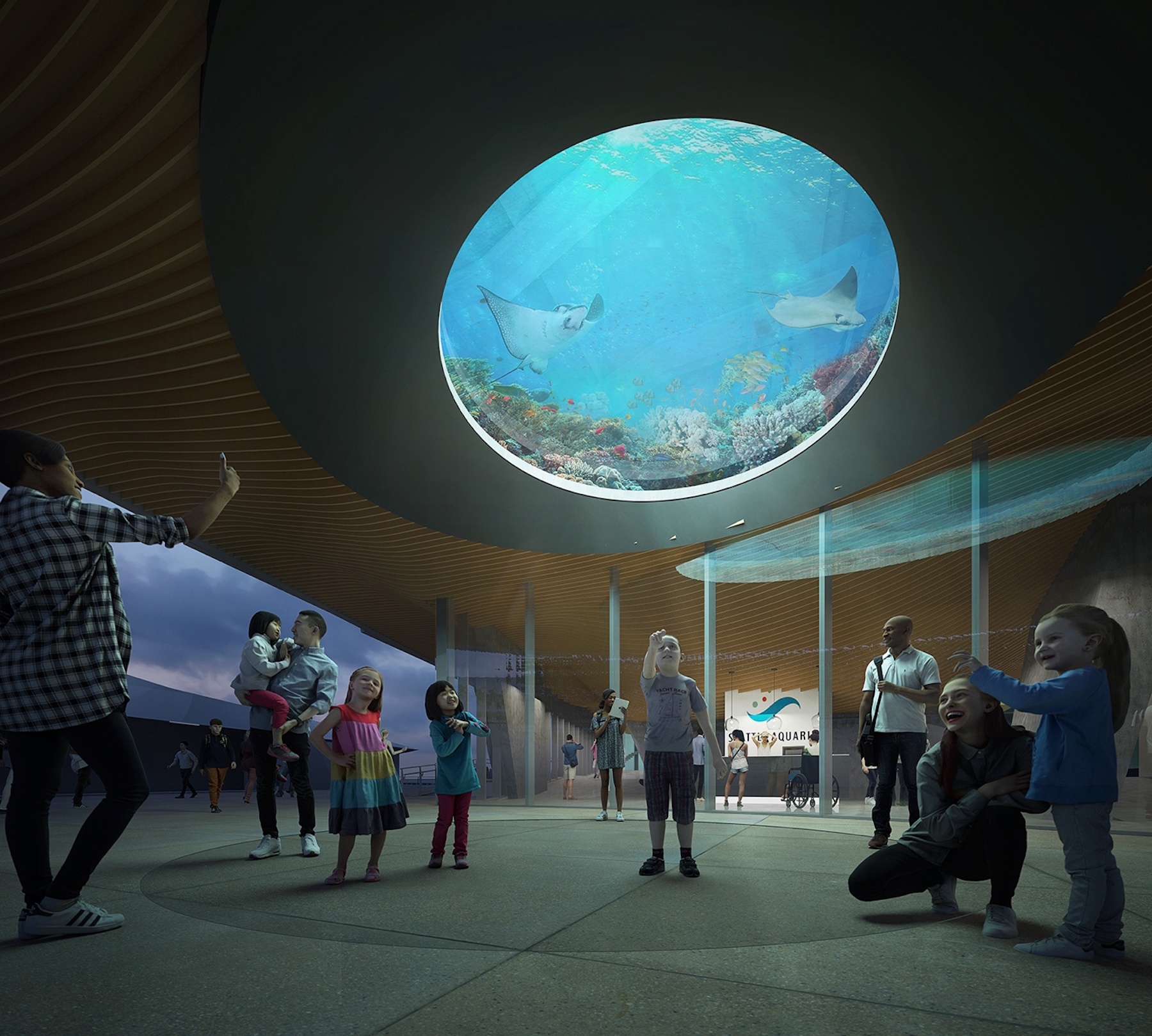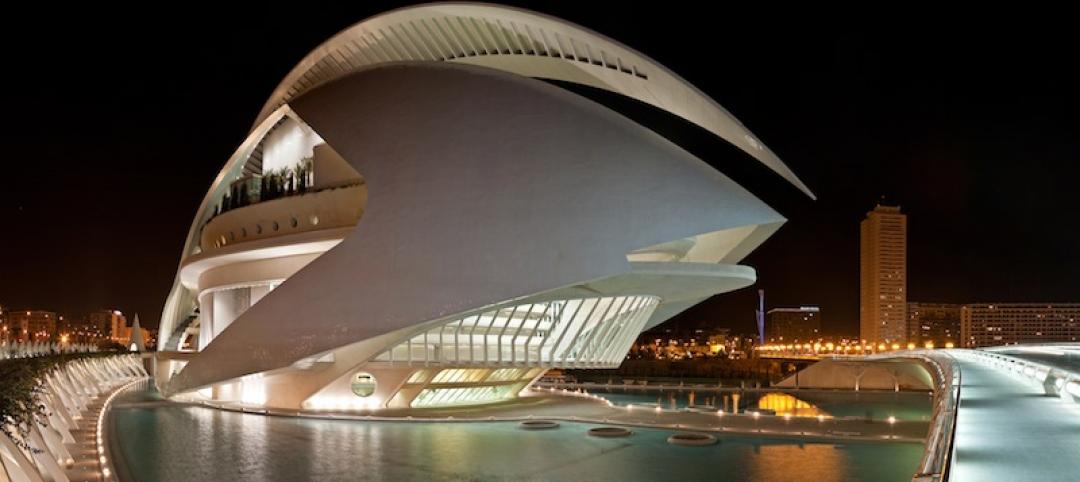Seattle Aquarium’s new Ocean Pavilion, currently under construction, features several exhibits that examine the human connection with the Earth’s oceans. The 49,000 sf Ocean Pavilion has 19 living exhibits organized around The Reef, a new 362,000 gallon, two-story living habitat that is visible from five unique perspectives.
The Reef depicts a biodiverse Coral Triangle reef community, featuring an expansive, nearly 30-foot-wide domed view on the ground floor and additional viewing windows on an upper gallery. Cantilevered over the Pavilion’s entrance, it also features the “oculus”—a 16-foot wide portal that allows passersby to stand beneath and view the exhibit without paying admission.
The aquarium’s new pavilion is “the spectacular northern focal point of the reimagined Seattle waterfront,” according to Thinc, the firm that designed the exhibitions. LMN Architects is the design architect on the project, and is collaborating with Thinc on the exhibitions. “Thinc views every possible part of the Aquarium as useful context for building relationships with the public. Even the parts normally hidden from view consciously reveal the tank habitat vessels and back of house, all designed both for functionality and beauty.”
“To imagine an aquarium built around ethical human relationships with the ocean means throwing out the playbook on how you design aquariums,” said Tom Hennes, founder and principal of Thinc. “We can touch people deeply and enrich their relationship with the natural world, and we can also be a vital instrument of social change that catalyzes public engagement toward a thriving future.”
The Pavilion exhibition is organized into eight areas: 1) the entry/exit; 2) One Ocean Hall; 3) At Home in the Ocean; 4) The Archipelago (lower level view); 5) Window on The Reef (a dramatic, 30-foot wide domed window); 6) The Archipelago (upper level); 7) The Reef (upper level with three distinct views); and 8) Behind the Scenes (includes Jelly Nursery and Programming Area).
Dramatic living exhibits, engaging storytelling, and immersive multimedia installations will envelop visitors in the webs that connect ocean life to the complex arenas of human activity. The design was focused on realizing the Aquarium’s vision to make ocean conservation a global imperative, a community value, and a deeply personal priority for all. The Ocean Pavilion provides new opportunities for the Aquarium’s community to learn about the connections between Seattle’s local waters and the world’s oceans.
A collaboration with Coast Salish Tribal and Urban Native community members, as well as Indo-Pacific conservation partners, informed Thinc’s treatment of narratives and the design of the Ocean Pavilion. The design process included focused workshops and listening sessions with Coast Salish elders and tribal youth, and Urban Native community members, who contributed to the outcome.
The Ocean Pavilion is scheduled to open in 2024.
On the Building Team:
Owner and/or developer: Seattle Aquarium Society
Exhibition Designer: Thinc Design
Design architect & Architect of Record: LMN Architects
MEP engineer: PAE
General contractor/construction manager: Turner Construction Company
Horticulture Consultant: Zoo Horticulture Consulting and Design
Lighting Consultant: Palazzo Lighting
Technology Consultant: Teecom
Focus Tank LSS: Tenji
Development Manager: Shiels Obletz Johnsen (SOJ)



Related Stories
| Jan 28, 2014
Big Ten Conference opens swanky HQ and museum [slideshow]
The new mixed-use headquarters includes a museum, broadcast studios, conference facilities, office spaces, and, oh yeah, a Brazilian steakhouse.
| Jan 13, 2014
Custom exterior fabricator A. Zahner unveils free façade design software for architects
The web-based tool uses the company's factory floor like "a massive rapid prototype machine,” allowing designers to manipulate designs on the fly based on cost and other factors, according to CEO/President Bill Zahner.
| Jan 11, 2014
Getting to net-zero energy with brick masonry construction [AIA course]
When targeting net-zero energy performance, AEC professionals are advised to tackle energy demand first. This AIA course covers brick masonry's role in reducing energy consumption in buildings.
| Dec 30, 2013
Calatrava facing legal action from his home town over crumbling cultural complex
Officials with the city of Valencia, Spain, are blaming Santiago Calatrava for the rapid deterioration of buildings within its City of Arts and Sciences complex.
| Dec 19, 2013
Mastering the art of crowd control and visitor flow in interpretive facilities
To say that visitor facility planning and design is challenging is an understatement. There are many factors that determine the success of a facility. Unfortunately, visitor flow, the way people move and how the facility accommodates those movements, isn’t always specifically considered.
| Dec 13, 2013
Safe and sound: 10 solutions for fire and life safety
From a dual fire-CO detector to an aspiration-sensing fire alarm, BD+C editors present a roundup of new fire and life safety products and technologies.
| Dec 10, 2013
16 great solutions for architects, engineers, and contractors
From a crowd-funded smart shovel to a why-didn’t-someone-do-this-sooner scheme for managing traffic in public restrooms, these ideas are noteworthy for creative problem-solving. Here are some of the most intriguing innovations the BD+C community has brought to our attention this year.
| Nov 27, 2013
BIG's 'oil and vinegar' design wins competition for the Museum of the Human Body [slideshow]
The winning submission by Bjarke Ingels Group (BIG) and A+ Architecture mixes urban pavement and parkland in a flowing, organic plan, like oil and vinegar, explains Bjarke Ingels.
| Nov 27, 2013
Wonder walls: 13 choices for the building envelope
BD+C editors present a roundup of the latest technologies and applications in exterior wall systems, from a tapered metal wall installation in Oklahoma to a textured precast concrete solution in North Carolina.
| Nov 26, 2013
Construction costs rise for 22nd straight month in November
Construction costs in North America rose for the 22nd consecutive month in November as labor costs continued to increase, amid growing industry concern over the tight availability of skilled workers.

















